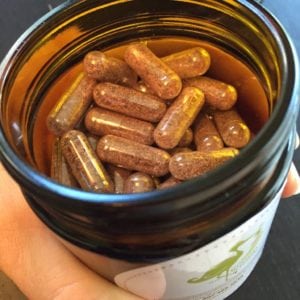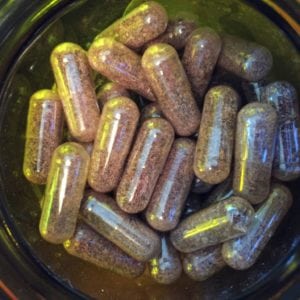
FAQS about Placenta Encapsulation

The finished product
How many capsules will I get?
The amount of capsules depends on the size of the placenta. You could get anywhere from 80-150 capsules.
How long does placenta encapsulation take?
I strive to complete the encapsulation process 24-48 hours after I have the placenta.
How should I prepare the placenta for pick up or delivery?
Stephanie will take care of all preparation needed for the encapsulation process. All you have to do is be sure and double bag the placenta and keep it cold. It’s best to put the placenta on ice or in the refrigerator as soon as possible after birth, but it must be done within the first 2-4 hours. It may stay in the cooler with ice bags as listed above for up to 12 hours. The ice must remain hard and not start to melt. It should be placed in a refrigerator if a pick up or drop off to Stephanie is not possible within 12 hours. Please ensure the placenta is refrigerated and kept cold. Do not freeze the placenta with out talking to Stephanie and discussing pick up or delivery. Freezing the placenta will prolong your processing time. It will need to be thawed in the refrigerator and may take 24-48 hours to thaw for processing. If using ice bags to keep the placenta cold DON’T FORGET to replace the ice before heading home or out for delivery. IMPORTANT: Be sure not to allow the placenta to be bagged in a Bio Hazard red bag. The placenta will absorb the red die from the bag.
Is the placenta still viable if its not refrigerated immediately after birth?
Yes, the placenta is good with out refrigeration for up to 2-4 hours after its birth. However, it is best to place it on ice as soon as possible. In preparation discuss your wishes with your provider during your prenatal visits. It’s helpful to include care of the placenta in your birth plan. Bring a cooler and two quart size ziplock bags along with to your birth.
Pathology and the Placenta. NO GO!

completed placenta pills
Should your provider want to send the placenta to pathology, ask if it is essential that it go to pathology at all. Your provider may just be curious or following his/her normal routine procedures. It may not need to go. If your provider insists that it goes to pathology request that they cut a sliver or small 1” square off to send, leaving the bulk of the placenta in your room on ice. If the placenta makes its way to pathology, it could be covered in chemical called formalin, aka formaldehyde. This is a toxin that will render the placenta unusable for encapsulation. Ask if it can be placed in a saline solution instead. If your hospital has policies that require the entire placenta go to pathology ask that it be placed in a white basin NOT A RED BIOHAZARD BAG. This too may ruin the placenta. The placenta may be placed inside the white basin or provided ziplock baggies then placed in a biohazard bag.
The information on this page has not been evaluated by the Food and Drug Administration. The services offered by The Green Stork, LLC and stephanie@greenstorkmn.com are not clinical, pharmaceutical, or intended to diagnose or treat any condition. Families who choose to utilize the services listed on this page and provided by The Green Stork take full responsibility for choice in doing so as well as for their own health and for researching and using remedies.
